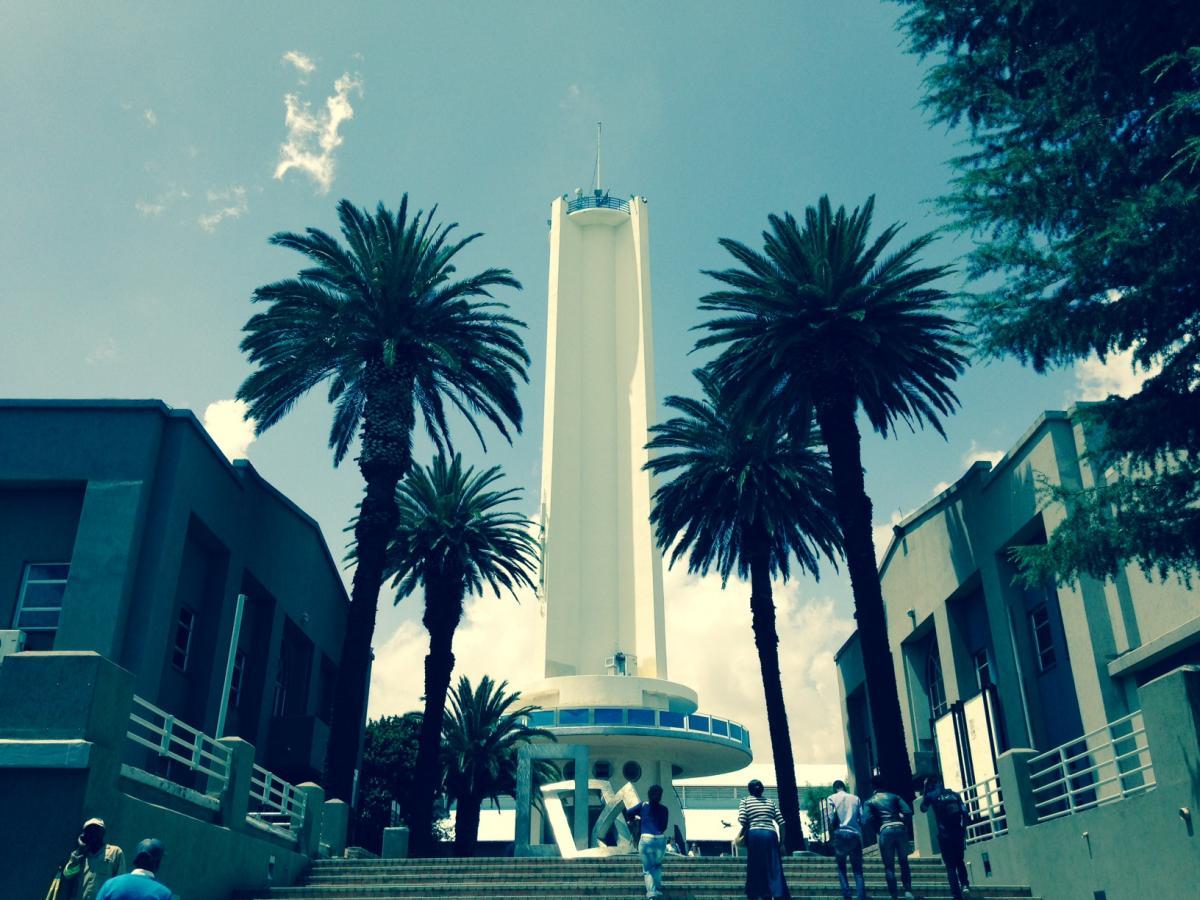
Disclaimer: Any views expressed by individuals and organisations are their own and do not in any way represent the views of The Heritage Portal. If you find any mistakes or historical inaccuracies, please contact the editor.
Everytime we travel to Wits campus we look up in amazement at the majestic Tower of Light. It has been standing since the mid 1930s and is still a landmark on the Johannesburg skyline. The Tower was rated one of Johannesburg's Top 100 sites in the lead up to the Centenary Celebrations. Below is the statement of significance written by Bernard Cooke in 1985.
The Tower of Light at the old Milner Park showgrounds [now Wits West Campus] was erected for the Empire Exhibition held there in 1936. Its symbolism was related to electricity and it was sponsored by Escom. It is said that Van der Bijl, then Chairman of Iscor and Escom was personally interested in the project.
For some time before the Exhibition a tower of this nature had been mooted and envisaged constructed in steel. In the event the decision to proceed was taken so late that there was insufficient time and it was decided to build it in concrete which would be quicker. The architect was Professor Geoffrey Pearse, then Professor of Architecture at the Witwatersrand University. He consulted with Professor W.G. Sutton who was Professor of Engineering at Wits at the time. The structural design was prepared by him and his Department.
The bold architectural design with its central cylindrical core and projecting fins, had the mechanistic quality of the Modern Architecture of the 1930s, railings and details are suitably ‘ship-like’. The top of the Tower with the fins projecting over the top balcony is slightly ‘Art Deco’ in character and reminiscent of the top of the tower of Escom House (now demolished) also designed by Professor Pearse.
It was intended to build the Tower 200 feet high but it was reduced to 150 feet. Various reasons have been given for this such as problems with wind pressure, foundations, or completion in time, but probably cost was the major consideration. At that time, 1935, Escom House at 225 feet high was the tallest structure in the City. Ansteys was next and the Tower of Light third at 150 feet. Escom House was started first but completed at the about the same time as the Tower.
The Engineering of the Tower did not appear to present any excessive difficulty and the structural design was not particularly advanced or outstanding for that time. However, in the process of construction a method was used for the first time in South Africa. This was the use of sliding shuttering, in which the form work or mould in which the concrete is poured was slid upwards after each pour. The Contractors were Lewis Construction (later consolidated into the present LTA organisation) and the Manager in charge was Mr Schwarrer with his foreman ‘Blue’ Rafferty.
Various ideas were envisaged for the Tower such as a lift to the top for sightseers and a searchlight mounted at the top but these were never carried out.
As a striking monument and one of the tallest of its time and as a familiar landmark and reminder of the Rand Show, are factors that seem to strongly qualify it for preservation for posterity.
Comments will load below. If for any reason none appear click here for some troubleshooting tips. If you would like to post a comment and need instructions click here.
